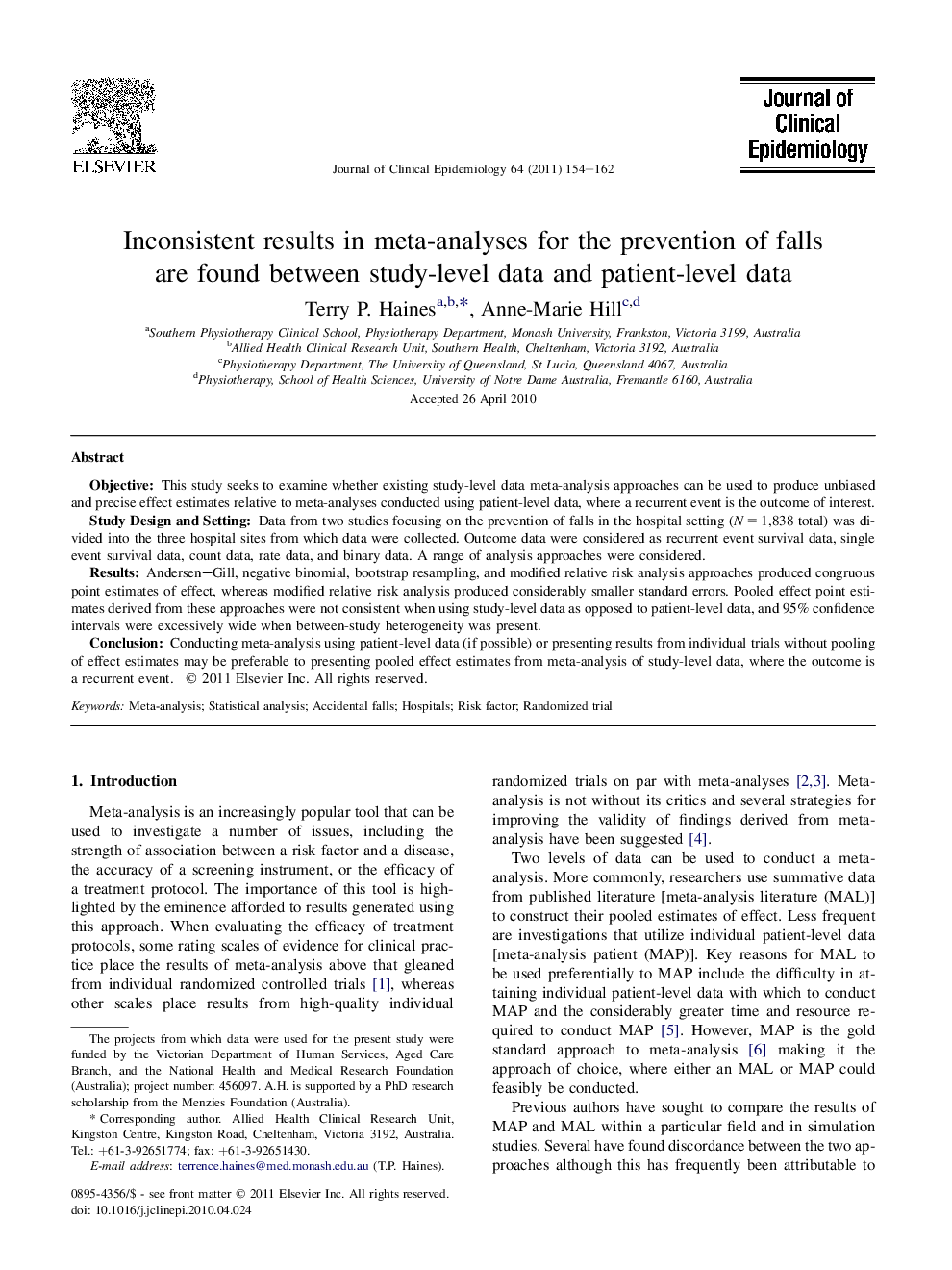| Article ID | Journal | Published Year | Pages | File Type |
|---|---|---|---|---|
| 1082715 | Journal of Clinical Epidemiology | 2011 | 9 Pages |
ObjectiveThis study seeks to examine whether existing study-level data meta-analysis approaches can be used to produce unbiased and precise effect estimates relative to meta-analyses conducted using patient-level data, where a recurrent event is the outcome of interest.Study Design and SettingData from two studies focusing on the prevention of falls in the hospital setting (N = 1,838 total) was divided into the three hospital sites from which data were collected. Outcome data were considered as recurrent event survival data, single event survival data, count data, rate data, and binary data. A range of analysis approaches were considered.ResultsAndersen–Gill, negative binomial, bootstrap resampling, and modified relative risk analysis approaches produced congruous point estimates of effect, whereas modified relative risk analysis produced considerably smaller standard errors. Pooled effect point estimates derived from these approaches were not consistent when using study-level data as opposed to patient-level data, and 95% confidence intervals were excessively wide when between-study heterogeneity was present.ConclusionConducting meta-analysis using patient-level data (if possible) or presenting results from individual trials without pooling of effect estimates may be preferable to presenting pooled effect estimates from meta-analysis of study-level data, where the outcome is a recurrent event.
